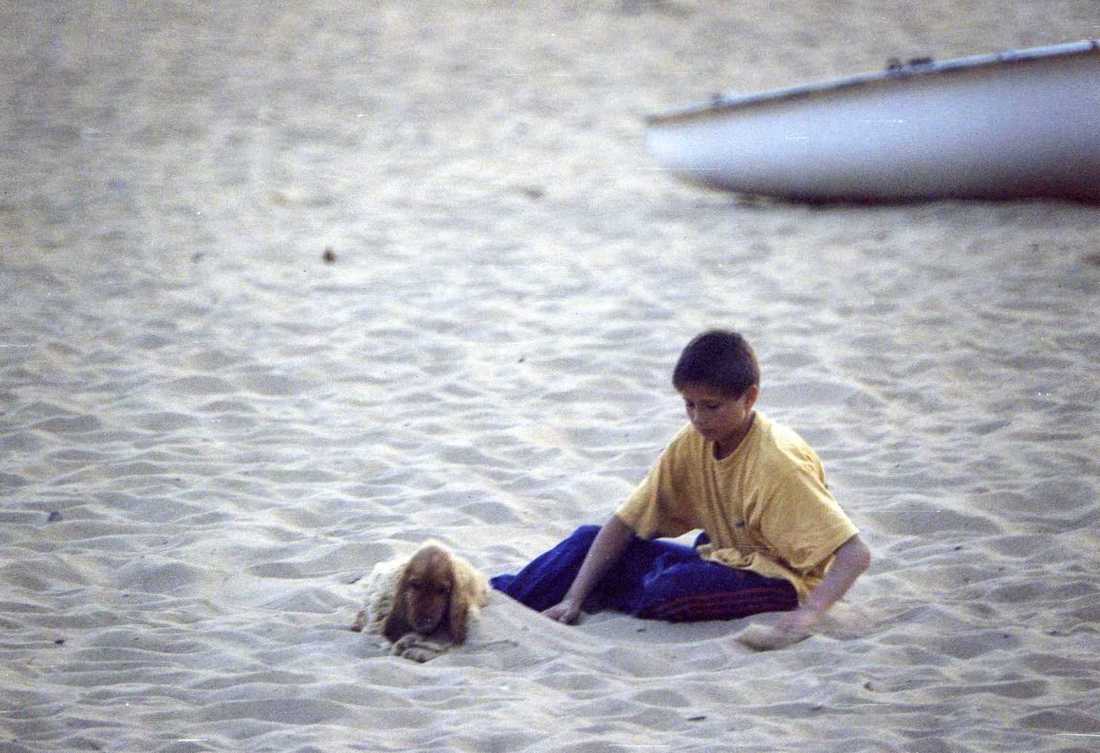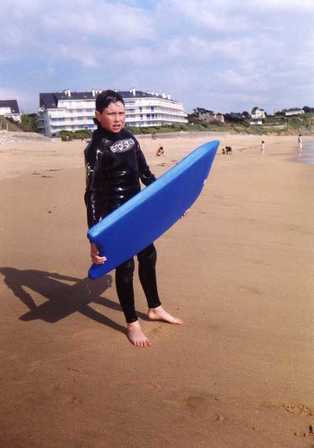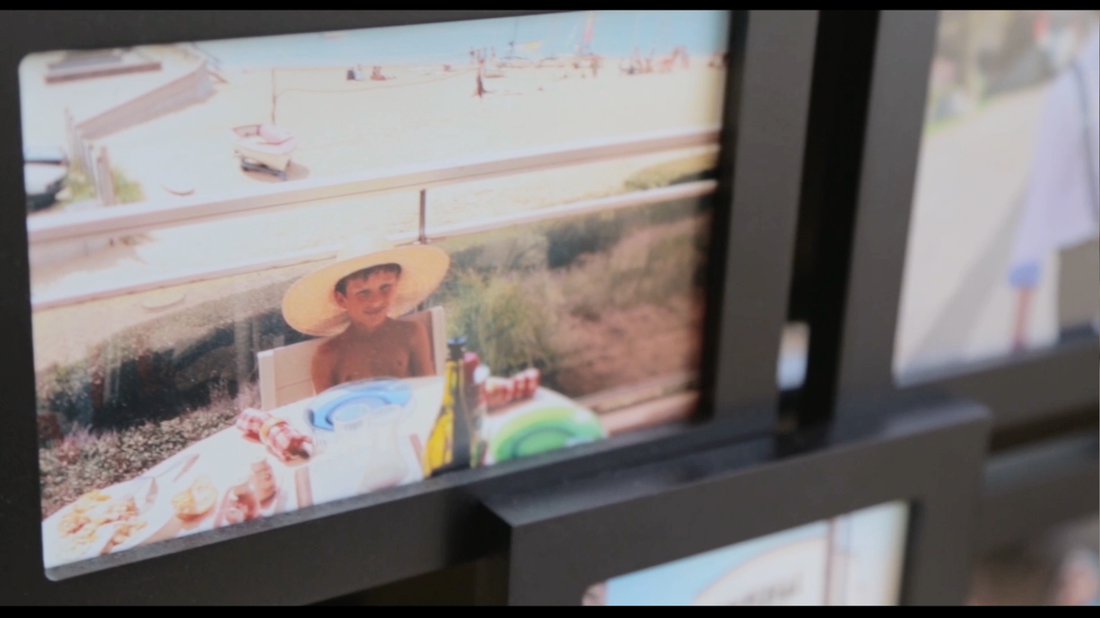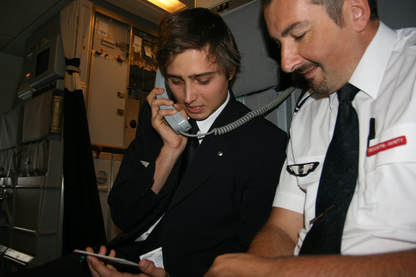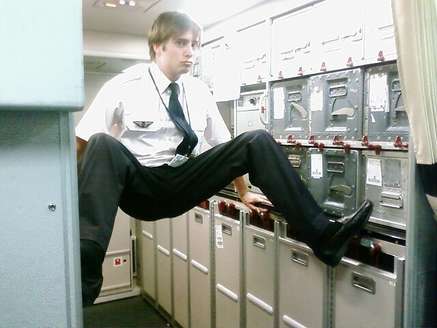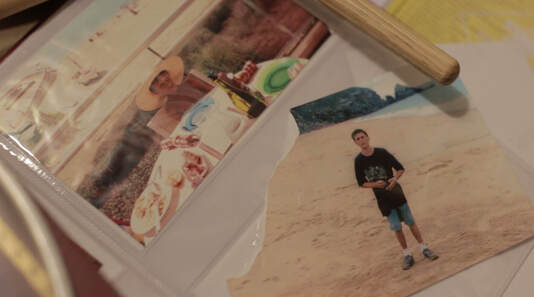Psi
Menu
II - PRODUCTION - THE LIVES
Chapter 10
Pornichet: Home Sweet Home (July 2016)
Pornichet: Home Sweet Home (July 2016)
|
Pornichet is the town where I grew up in France; it is a small resort on the Atlantic coast, about 5 hours’ drive from Paris and a 40-minute drive from Nantes, just south of Brittany. I would come here with my parents every summer when we stilled lived in Darlington, in the north of England, and eventually, when I was about 10, we moved there for good. I lived there until I was 18 and finished high-school.
This is where I set the life of the “original” character, the one who, afraid of all choices, chose nothing. He is the framing device for the other 5 lives.
In November 2015, I headed to Pornichet to shoot his scenes, during a hectic weekend that involved women's wigs and a troublesome video-projector. However, these shots aren't in the film, as I later came to re-shoot this character's scenes at a much later date... I talk about this in a later chapter: re-shoot & re-edits. During the summer of 2016, however, I returned to Pornichet to shoot the “childhood” scenes on the beach, where a kid plays among the boats and rocks. Narratively, this child is the "common ancestor" of all 6 characters in the film, as evidenced by the same childhood picture they have with them in the different lives.
To get these "childhood memory" shots, I asked around for a kid aged between 8 and 12, who could pass for a young version of me, and found the ideal kid in Iggy, the son of a friend of mine, Jaime, a crazy actor-chef-surfer-heavy-metal-rocker from Utah who somehow ended up living in southern Brittany too.
The way in which I came to meet Jaime some years earlier was the result of one those once-in-a-lifetime coincidences which make you wonder how often we unknowingly find ourselves crossing paths with people who we are actually more closely connected to than we know. When I was 21, I worked as a flight-attendant during the summers for Air France. On a flight from Paris to New York, I was managing my isle at the back of the plane, greeting passengers, when a blond girl roughly my age came aboard, crying her eyes out. Seeing as she looked alone, my colleagues immediately nudged me to go and assist her. She spoke American, and assured me she was okay, so I didn't insist. Half way through the flight though, while everyone else was asleep, she was wide awake and crying again – so I made a second attempt and offered her something to drink. This time she came to the galley for a chat.
She was sad because she had just spent the summer with her mother in France, and was now dreading going back to her life in the US. When I asked her where she was from in France, she replied: “You won’t know it, it’s a small place.” I insisted, and she replied: “Pornichet.” It turned out her mother lived on the same street as mine. We had even been to the same club on the same night the week before. We exchanged numbers and a few months later, when she returned to visit France, she called. I was introduced to her mother and her step father: Jaime. Thinking back on this, so many tiny contingent things led to this encounter: if she hadn’t been on that plane; if I hadn’t been in charge of that particular isle; if she hadn’t been crying; if she hadn’t been from the same town, let alone the same street... The list of tiny consequential circumstances adds up quickly and makes the whole thing insanely unlikely.
So back to the present: filming on the beach with Iggy, Jaime’s son, was a lot of fun – it was the only part of the film which I shot almost entirely on the Glidecam and with the wide 14mm lens. Furthermore, it was intriguing to notice how some elements of my childhood beach connected to other places I had filmed in the 5 cities and which I hadn’t planned or intentionally looked for: the stairs that lead down from the buildings, the wall that lines the beach, the pyramid-like structure that defines the rocks at the end of the beach, the starfish, the branches of the parasol, etc. As I began to see these patterns across the other footage I had shot around the world, I honed in on these leitmotivs and found their common significance: the ingredients of our life are already there in our childhood, and they will later become expressed in different ways depending on where our life goes. But they are there, and always were.
|
<------ Previous Chapter: A Making-Of in the Making-Of
Next Chapter: The Interviews ----->
TABLE OF CONTENTS
Next Chapter: The Interviews ----->
TABLE OF CONTENTS
[email protected]
© COPYRIGHT 2022. ALL RIGHTS RESERVED.
© COPYRIGHT 2022. ALL RIGHTS RESERVED.
